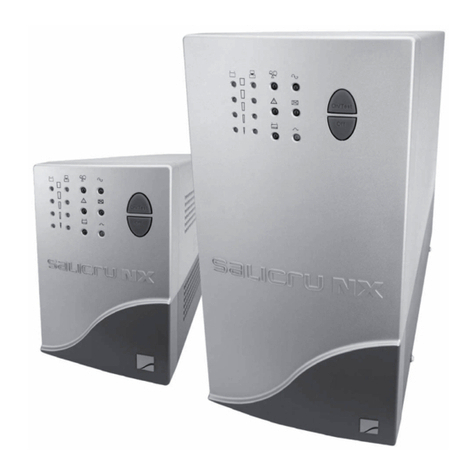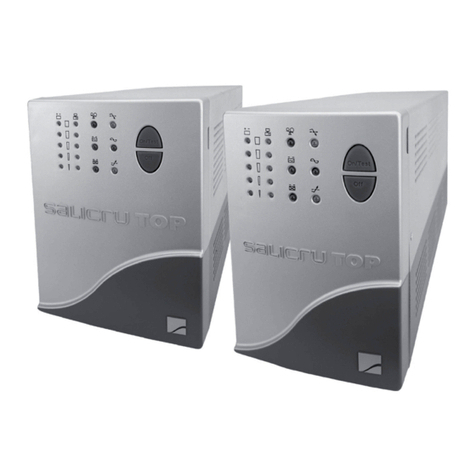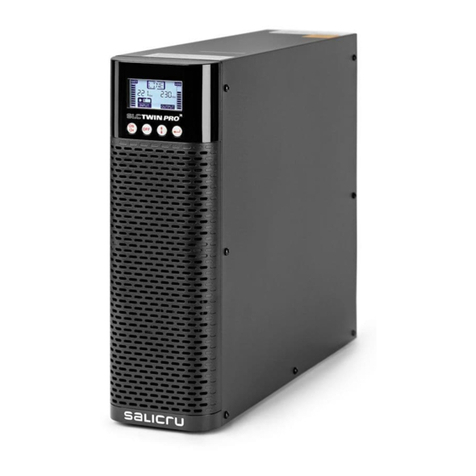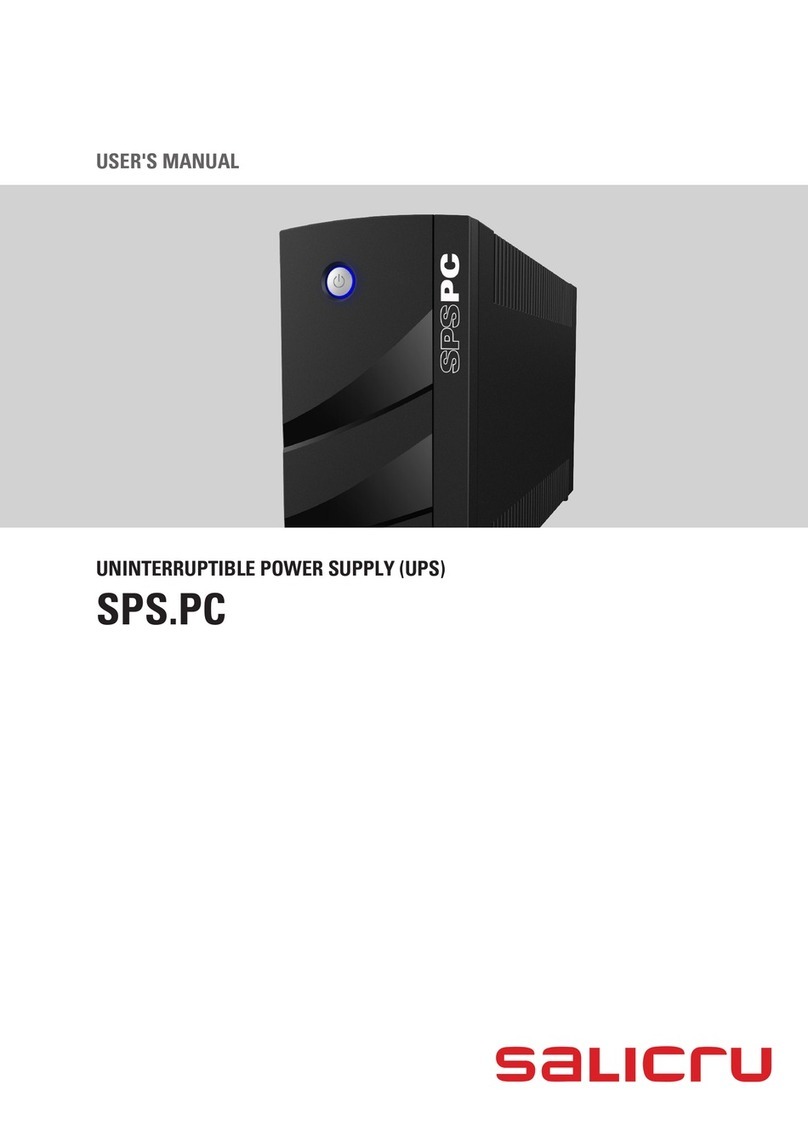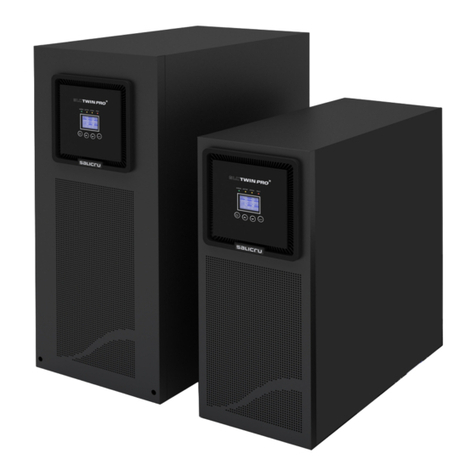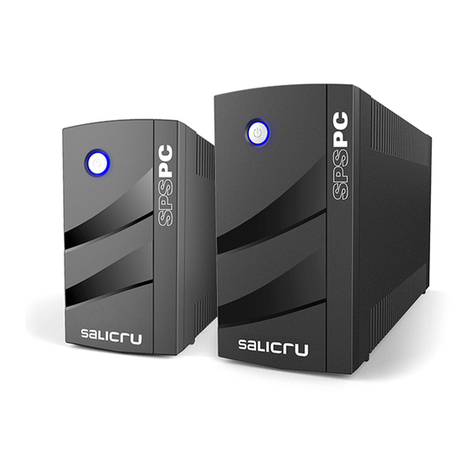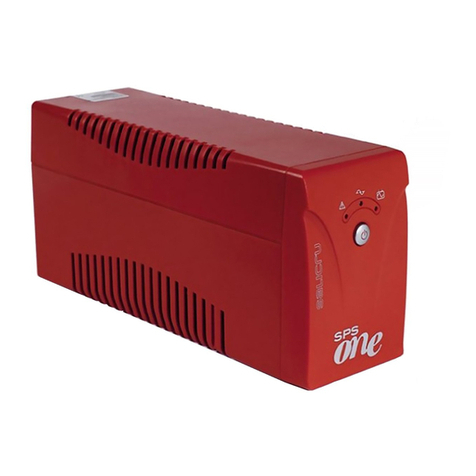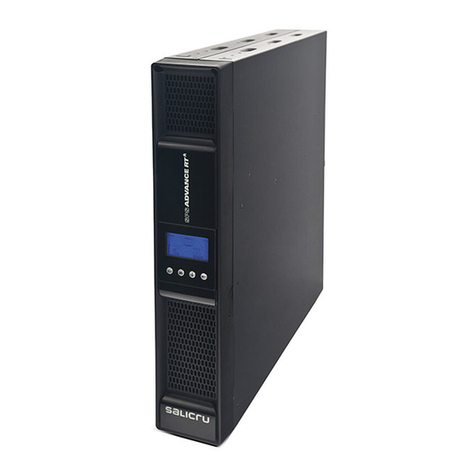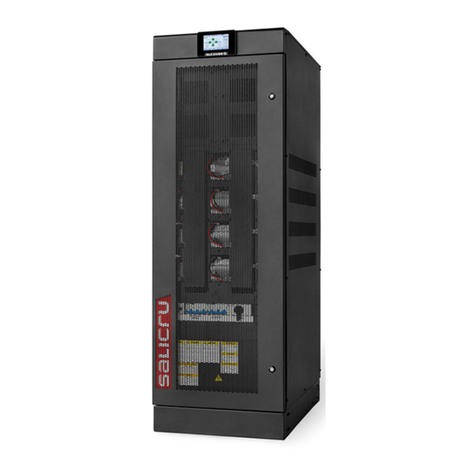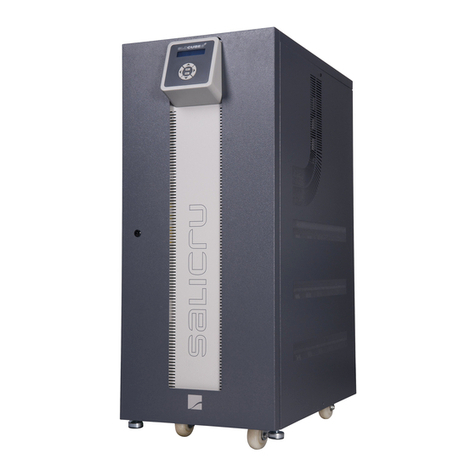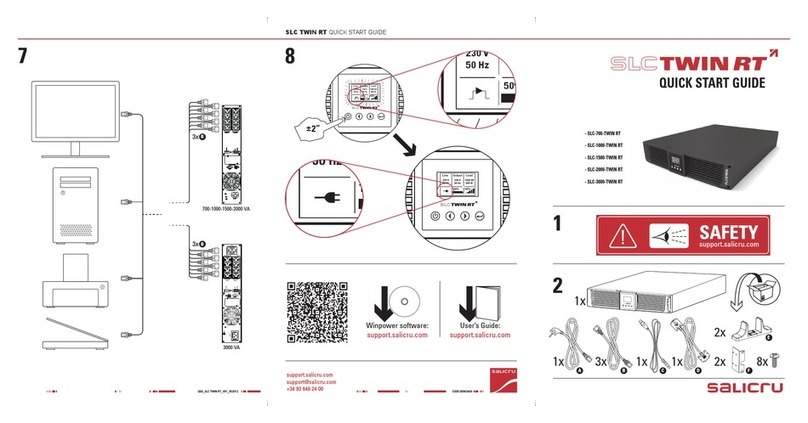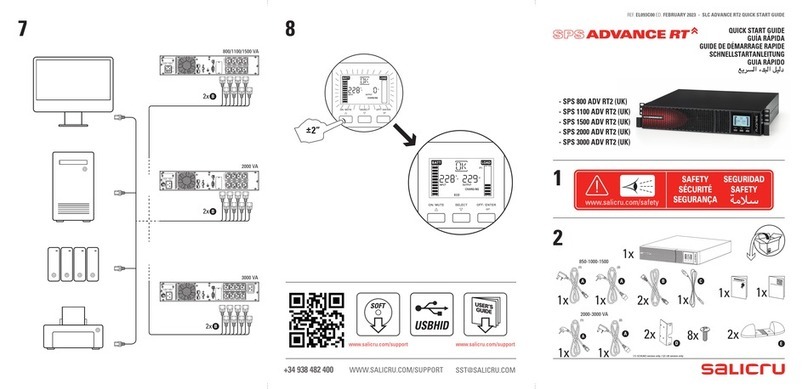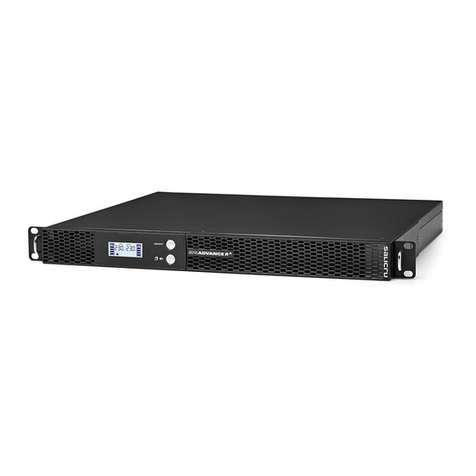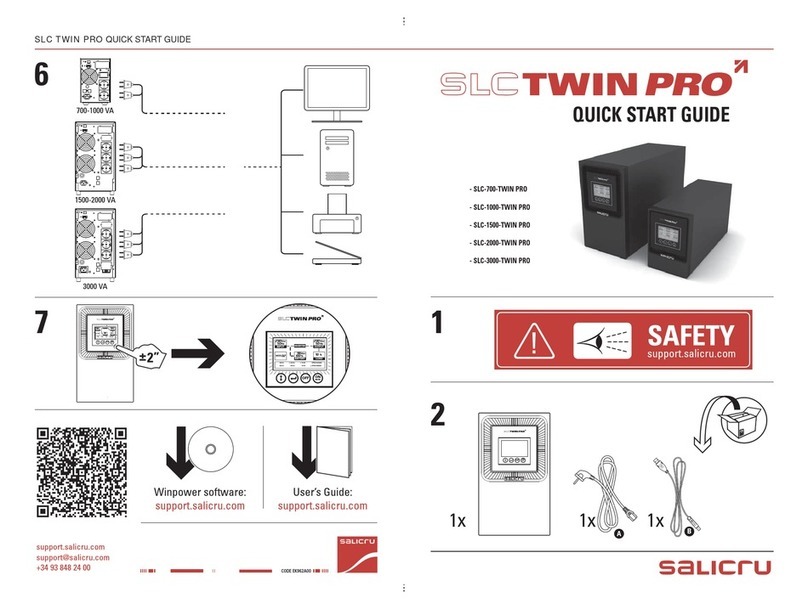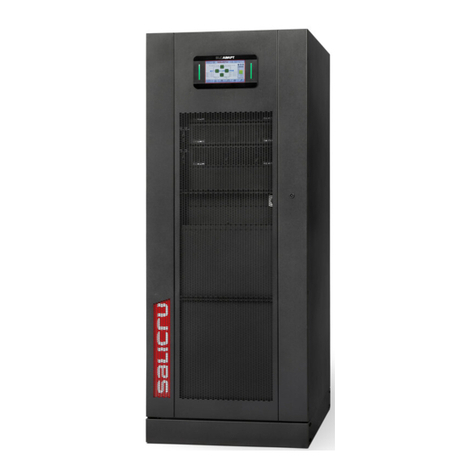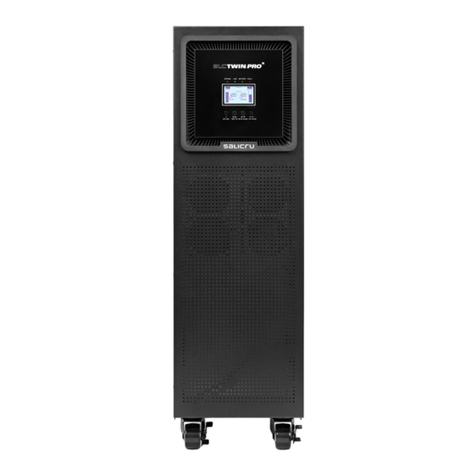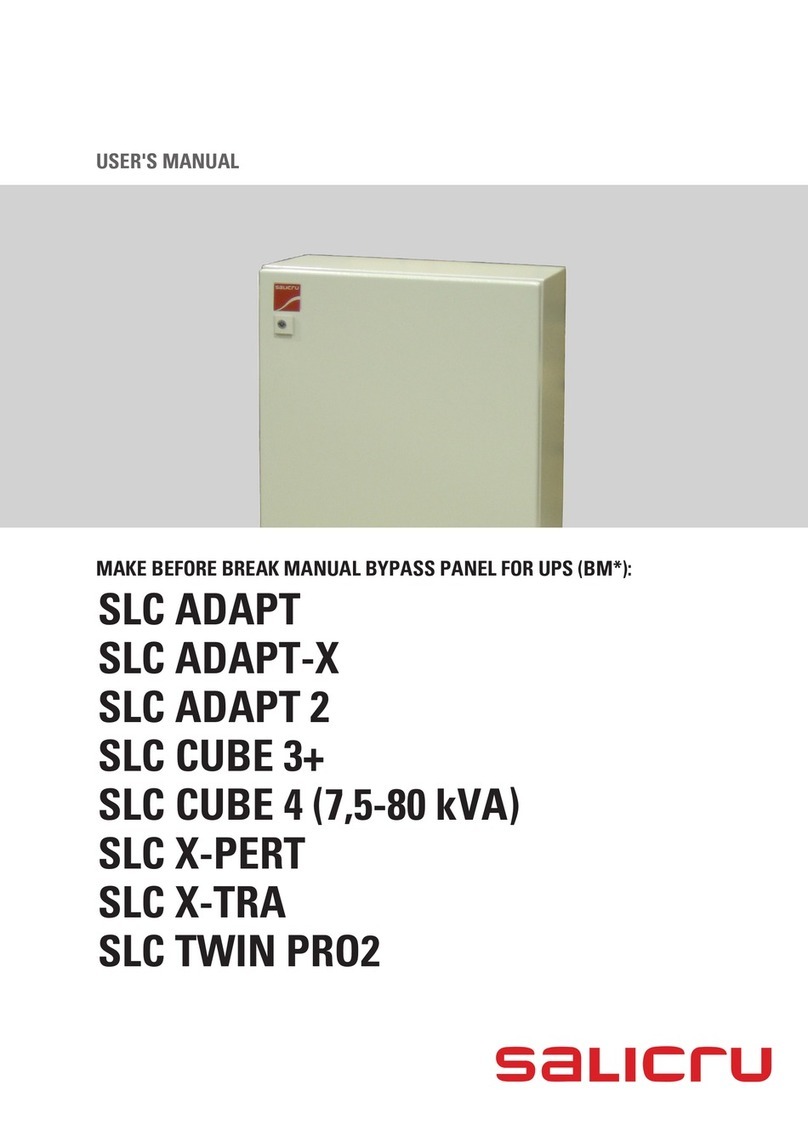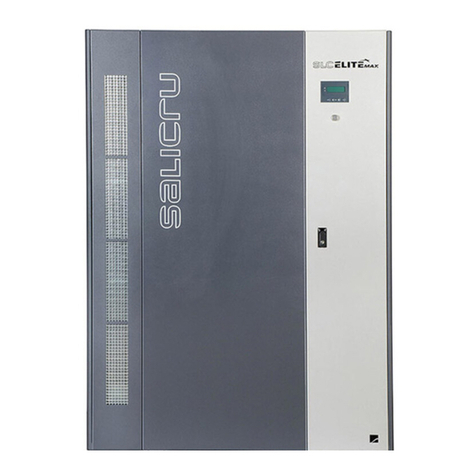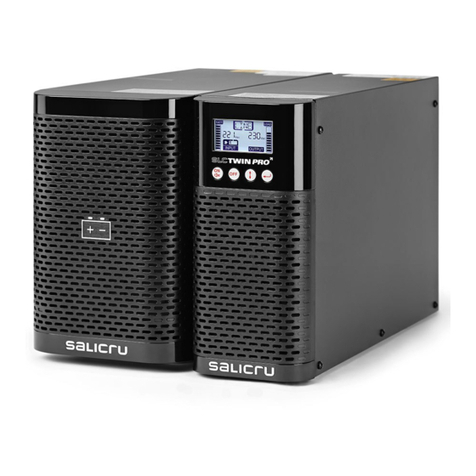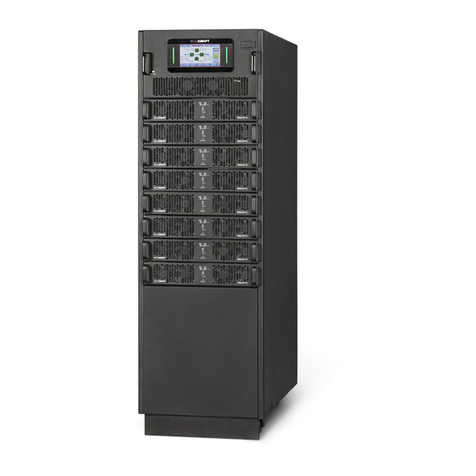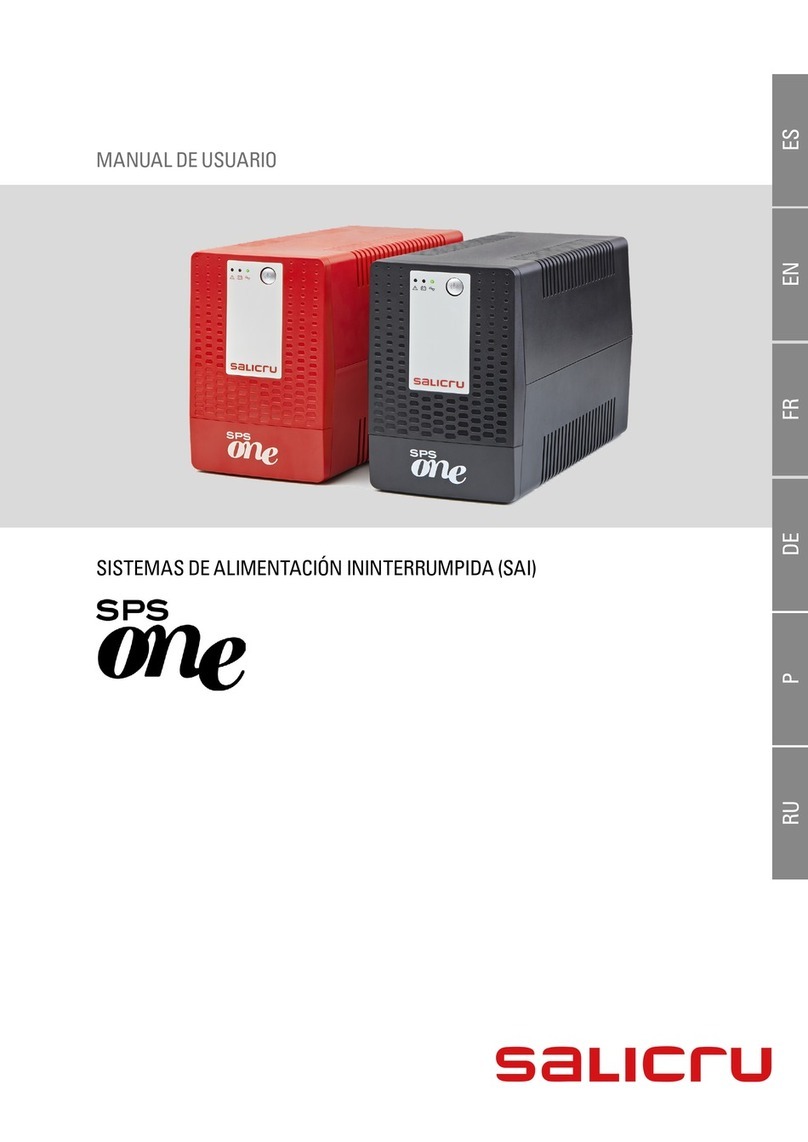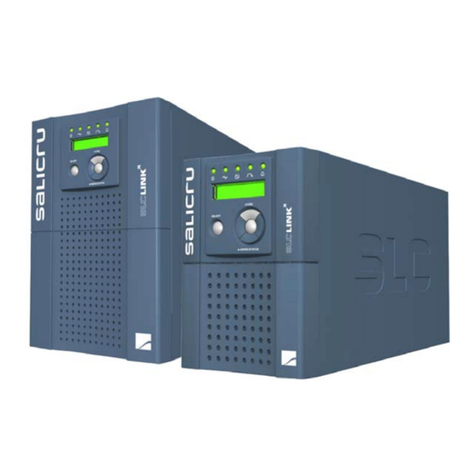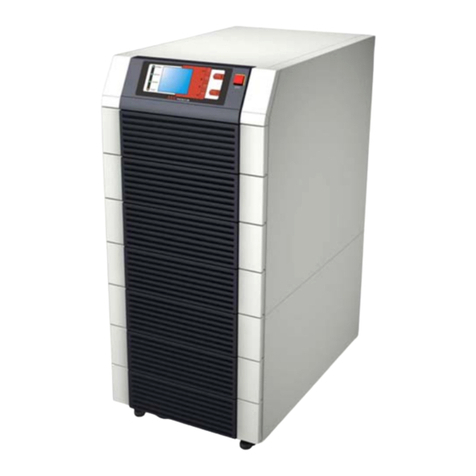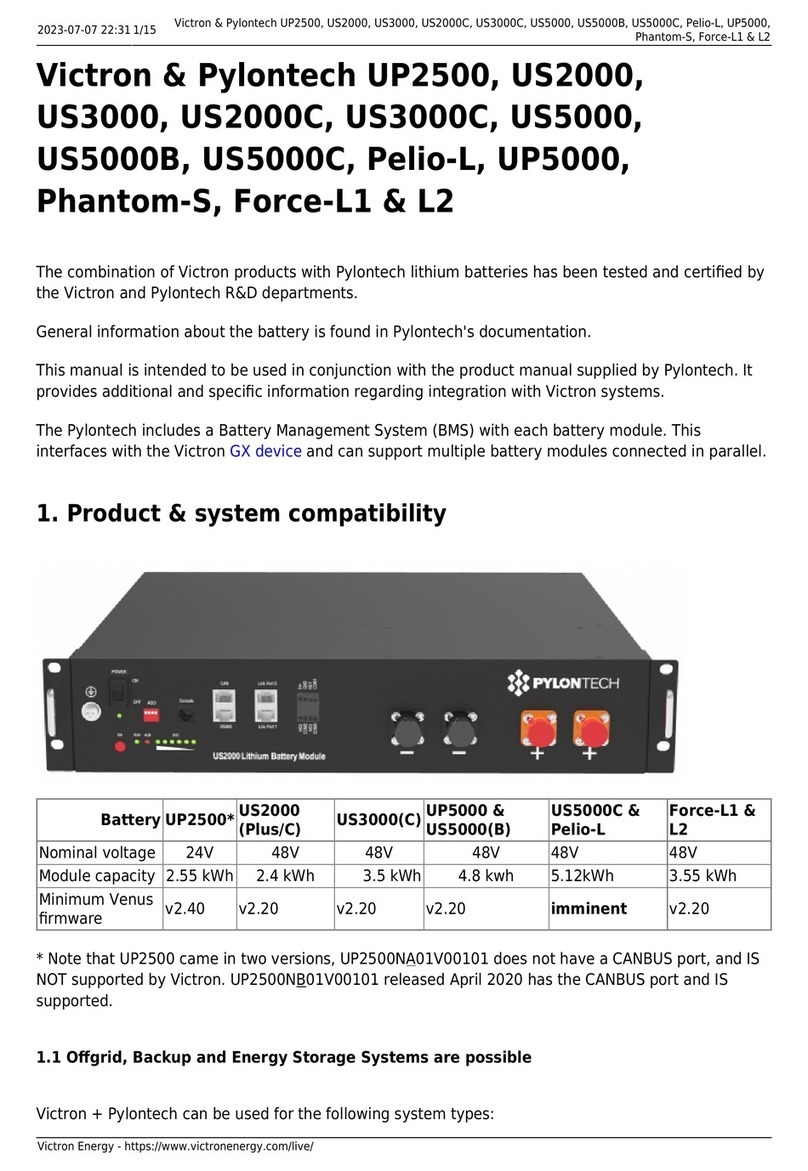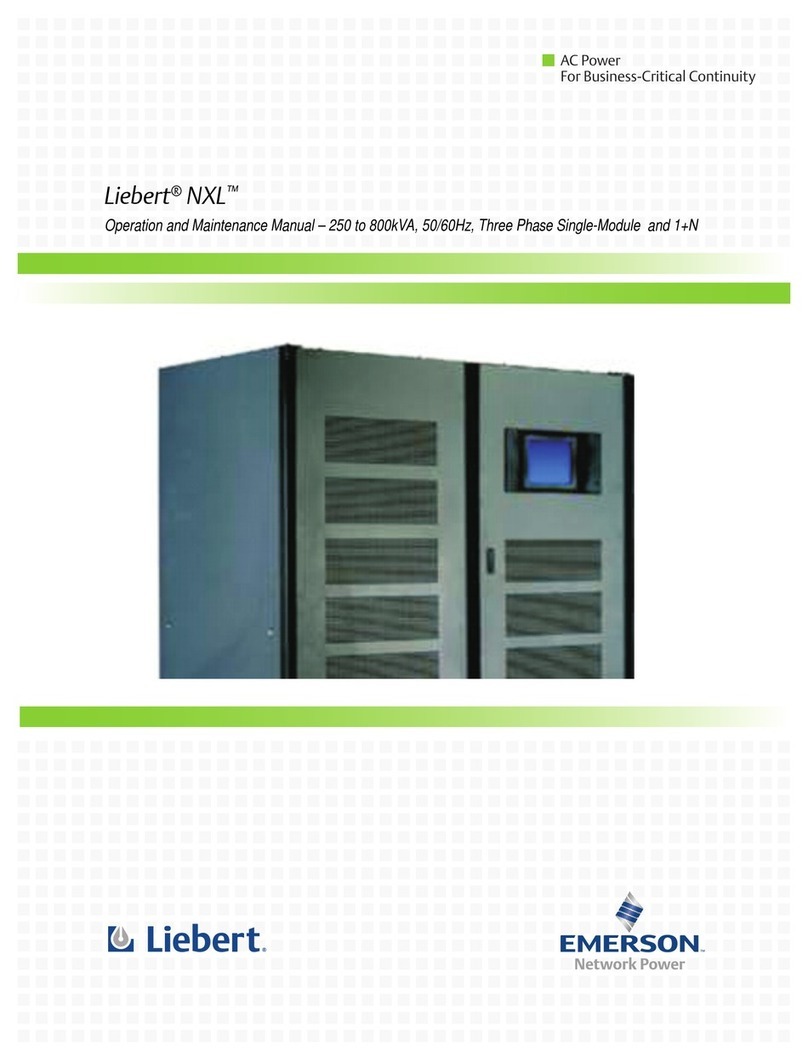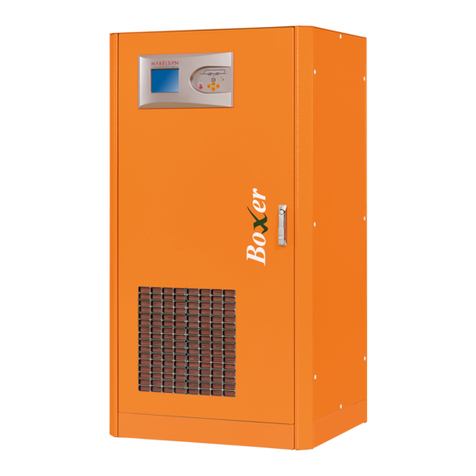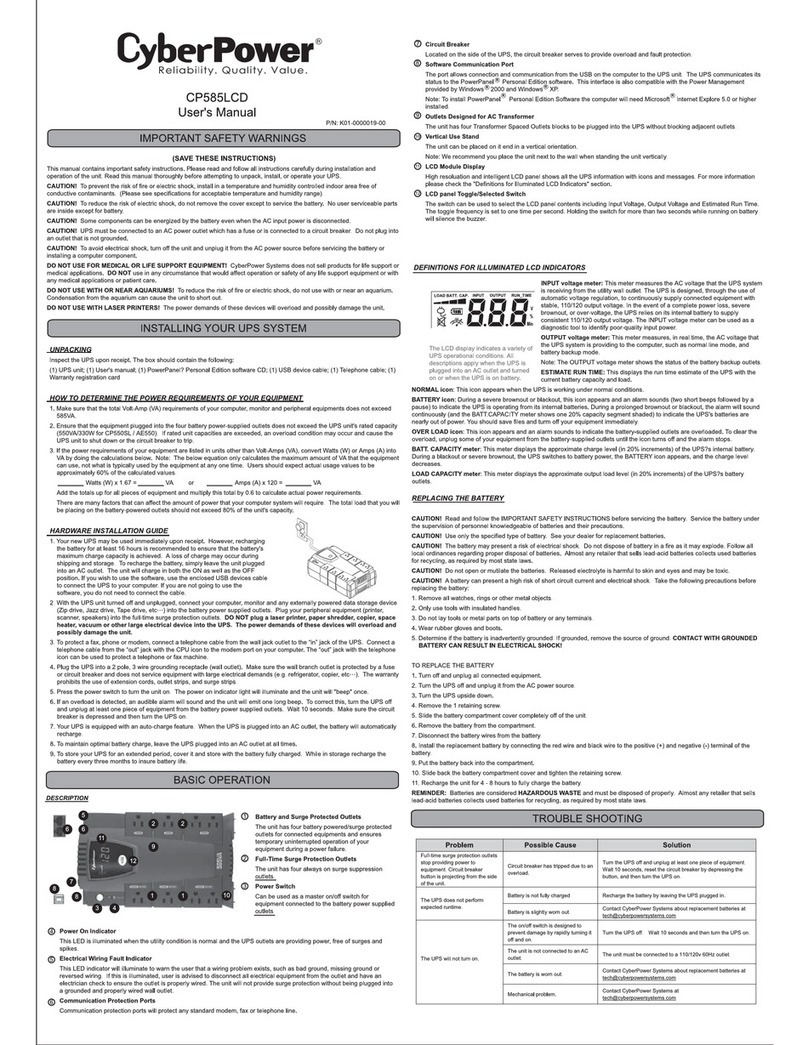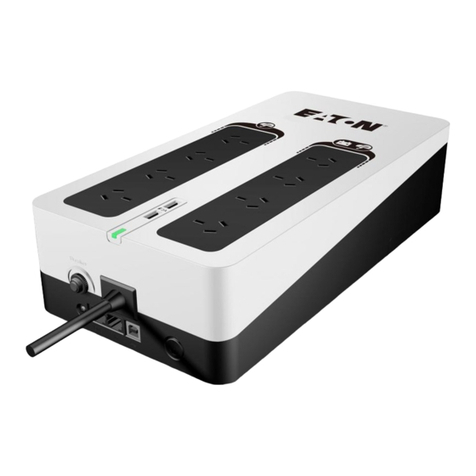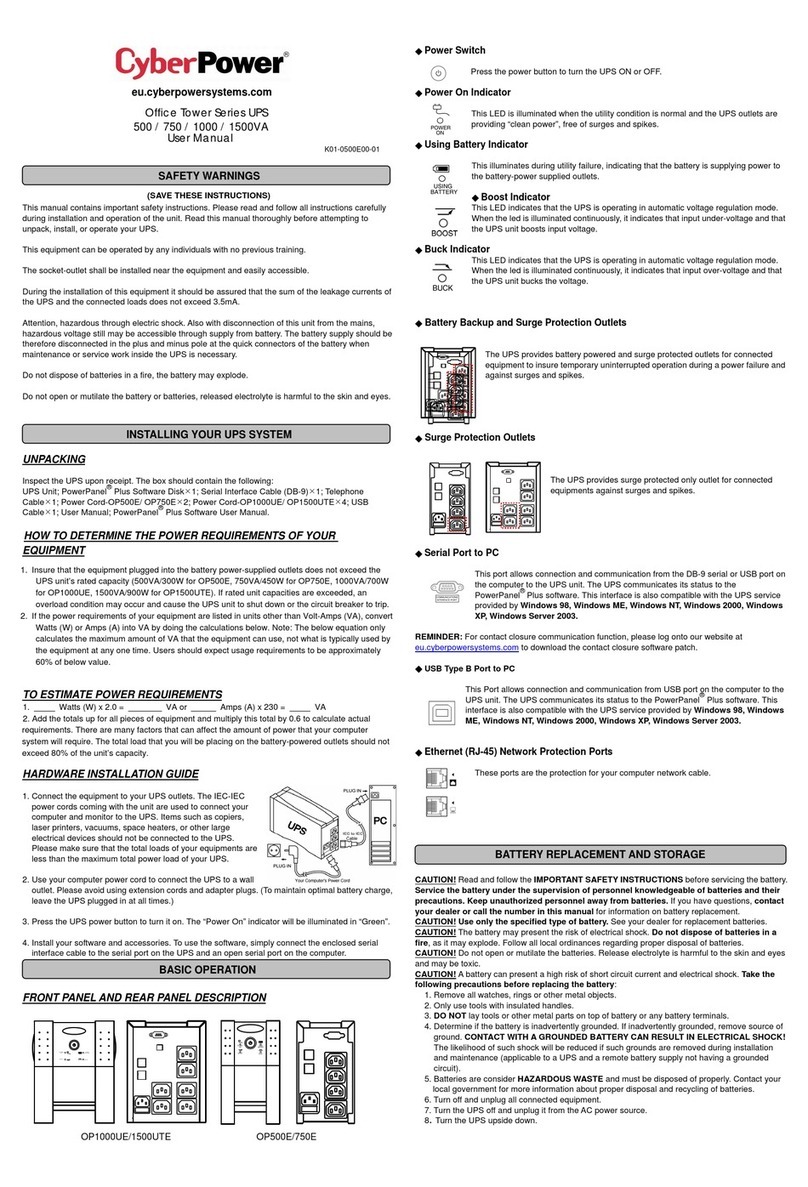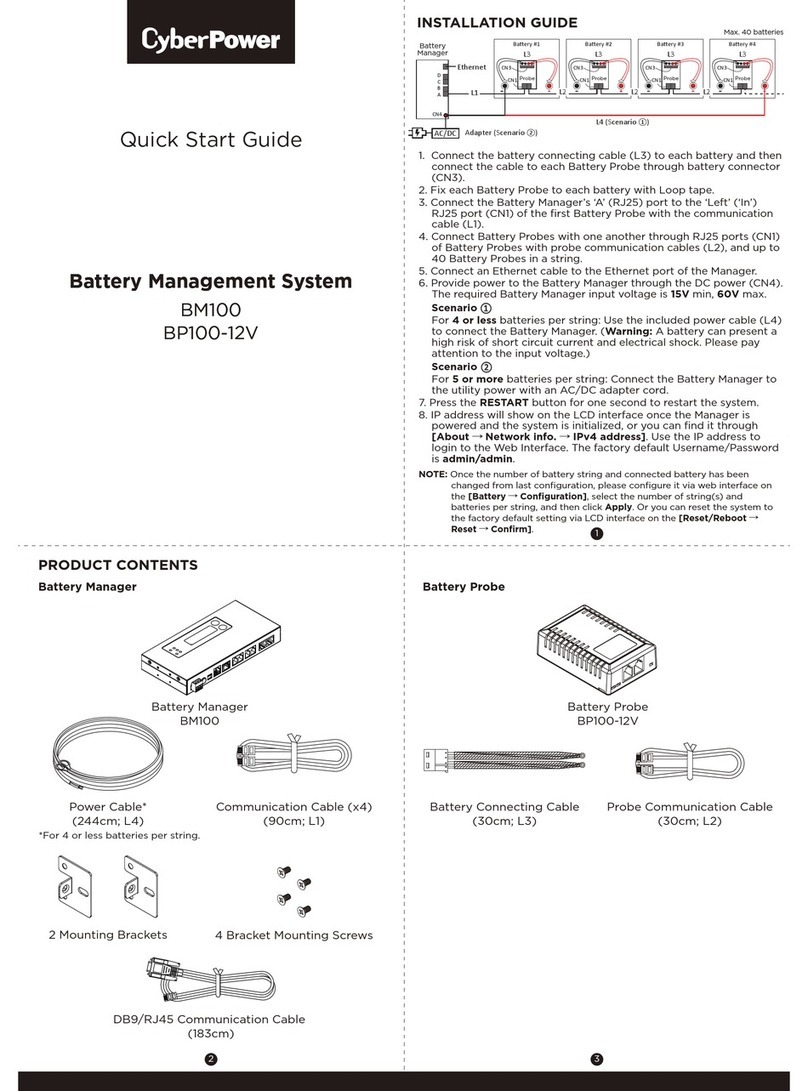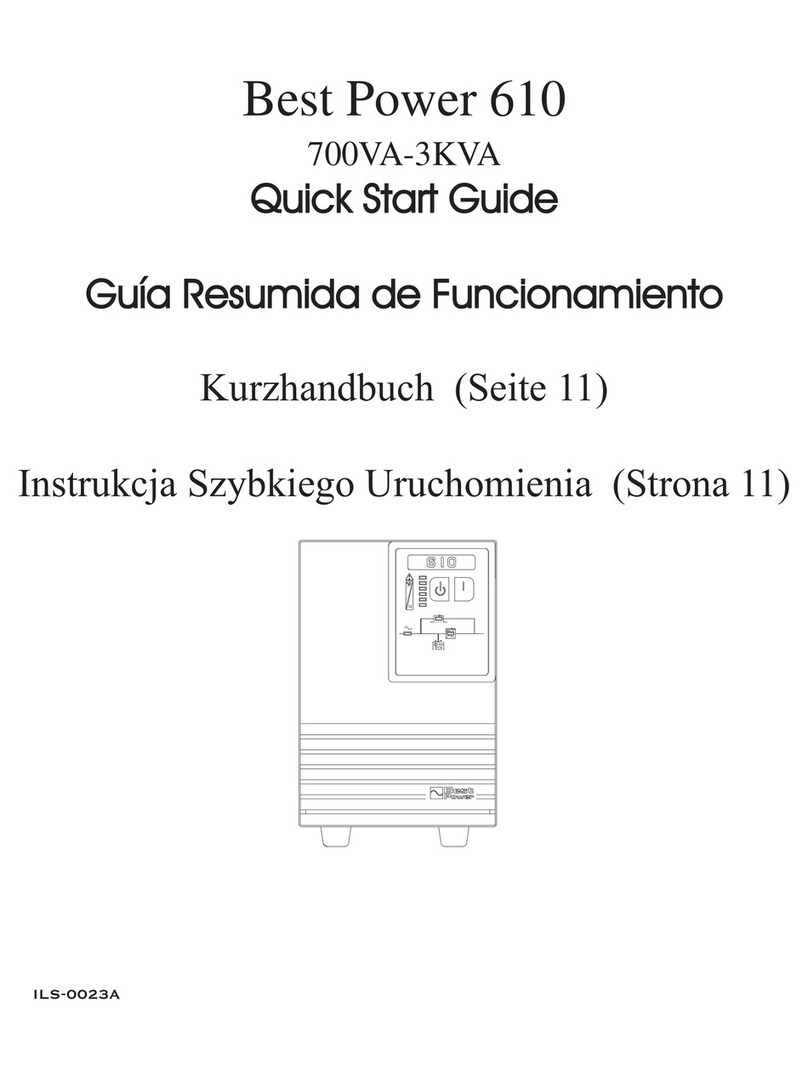
6SALICRU
3. QUALITY ASSURANCE AND STANDARDS.
3.1. STATEMENT BY THE MANAGEMENT.
Our goal is customer satisfaction, therefore this Management
has decided to establish a Quality and Environment Policy,
through the implementation of a Quality and Environmental
Management System that will enable us to comply with the
requirements demanded in the ISO9001 and ISO14001 and
also by our Customers and Stakeholders.
Likewise, the management of the company is committed to
the development and improvement of the Quality and Environ-
mental Management System, through:
•Communication to the entire company of the importance
of satisfying both the customer's requirements as well as
legal and regulatory requirements.
•The dissemination of the Quality and Environment Policy
and the setting of the Quality and Environment objectives.
•Conducting reviews by the Management.
•Providing the necessary resources.
3.2. STANDARDS.
The SLC ADAPT is designed, manufactured and sold in accord-
ance with Quality Management Standard ENISO9001. The
marking indicates conformity with EC Directives through the ap-
plication of the following standards:
•2014/35/EU. - Low voltage safety.
•2014/30/EU. - Electromagnetic Compatibility (EMC).
•2011/65/EU. - Restriction of the use of hazardous sub-
stances in electrical and electronic equipment (RoHS).
In accordance with the specifications of the harmonised
standards. Reference standards:
•EN-IEC 62040-1. Uninterruptible power supplies (UPS).
Part 1-1: General and safety requirements for UPS used in
user access areas.
•EN-IEC 60950-1. Information technology equipment.
Safety. Part 1: General requirements.
•EN-IEC 62040-2. Uninterruptible power supplies (UPS).
Part 2: EMC requirements.
The UPS has been designed in accordance with the following
European and international standards:
Element Standard reference
General safety requirements for
UPSs used in areas accessible to
operators
EN50091-1-1
IEC62040-1-1
AS62040-1-1
Electromagnetic compatibility
(EMC) requirements for UPSs
EN50091-2
IEC62040-2
AS62040-2(C3)
Method for specifying the
performance and testing
requirements of UPSs
EN50091-3
IEC62040-3
AS62040-3(VFI SS 111)
The product standards mentioned above incorporate
relevant clauses that comply with IEC and EN standards
for safety (IEC/EN/AS60950), electromagnetic emission
and immunity (IEC/EN/AS61000 series) and construction
(IEC/EN/AS60146 series and 60950).
The manufacturer is not liable in the event of modifica-
tion or intervention on the device by the user.
WARNING!:
The SLC ADAPT is a modular double-conversion on-line
30 to 1500 kVA C3 category UPS.
The product’s CE declaration of conformity is available
to the customer upon express request to our head office.
3.2.1. First and second environment.
3.2.1.1. First environment.
Environment including residential, commercial and light in-
dustry installations, directly connected, without intermediate
transformers, to a low voltage public power grid.
3.2.1.2. Second environment.
An environment that includes all commercial, light industrial
and industrial establishments that are not directly connected
to a low voltage power grid supplying buildings used for resi-
dential purposes.
3.3. ENVIRONMENT.
This product has been designed to respect the environment and
manufactured in accordance with ISO14001.
Recycling of the device at the end of its useful life:
Our company undertakes to use the services of authorised and
regulatory companies to treat the set of products recovered at
the end of their useful life (contact your distributor).
Packaging:
For the recycling of the packaging there must be compliance
with the legal requirements in force, in accordance with the
specific regulations of the country where the device is installed.
Batteries:
Batteries pose a serious danger to health and the environment.
The disposal of them shall be carried out in accordance with
the laws in force.
